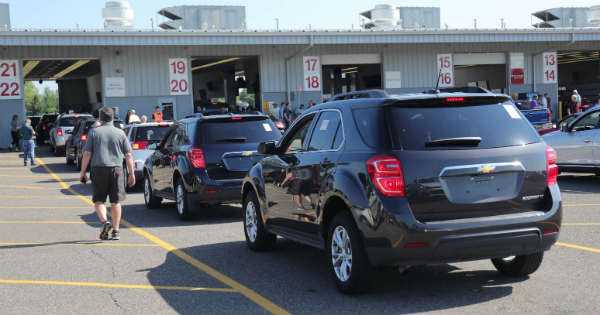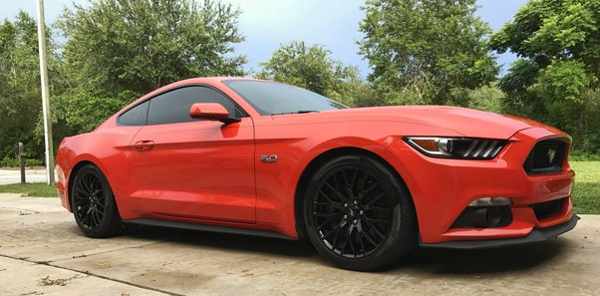New cars can depreciate up to 35% in their first year, but when you want to drive a new car, will purchasing outright or leasing affect the depreciation cost?
Whether you’ve leased or bought a car, depreciation affects everyone. But what exactly is it, and how does it influence our decisions when choosing a car? In this article, we`ll discuss ways to avoid car depreciation, how depreciation impacts new cars, and how to calculate depreciation.

Does depreciation affect cars being leased?
Depreciation does affect cars being leased. The only difference is that unlike when you buy outright and bear the depreciation directly, with leasing, you`ll be paying for your share of the car`s depreciation during the lease term. Higher-value cars with more to lose through depreciation incur higher lease costs than rapidly depreciating cars with strong resale values.
Adrian Hayter from Flexxilease, a short-term car leasing specialist, comments, “Car depreciation occurs regardless of who owns the vehicle. Ultimately, that depreciation cost is paid for by the end user because it’s how you calculate your lease charges. Lease charges, at their most basic, comprise the depreciation cost of the vehicle for the lease term, and an interest rate is applied on top, which generates profit for the leasing company.”
Does depreciation affect cars purchased outright?
Depreciation affects cars purchased outright. When you buy a car outright, you assume ownership and will be impacted for the vehicle`s depreciation. The value of a new car typically decreases over time due to factors such as wear and tear, market demand, and technological advancements. So, if there is a sudden drop in value, the owner would directly experience the financial impact when reselling the car. Unlike leasing, where the leasing company bears the depreciation cost, owners of outright purchased cars must contend with the full extent of depreciation.
Whether you lease or buy, depreciation remains a significant factor in deciding your car ownership options.
Can I avoid car depreciation?
No, you cannot avoid car depreciation, but you may be able to limit its effects. There are 2 key methods to minimise car depreciation or slow the depreciation rate: limiting mileage and regular maintenance.
- Limit Mileage: Limiting your mileage can significantly reduce car depreciation by maintaining the car`s condition and value. Lower mileage means less wear and tear, making the car more attractive to future buyers and preserving its resale value. Staying within mileage limits also helps keep the car under warranty, adding to its appeal. Lower mileage results in less depreciation due to better condition and desirability.
- Regular Maintenance: Follow the manufacturer’s recommended maintenance to keep the car in the best condition. Routine maintenance impacts the depreciation rate, including oil changes, brake checks, tyre rotations, and regular servicing. With regular maintenance, your car will perform better, and buyers are likely to pay a premium for cars with a well-maintained full-service history.
What is car depreciation?
Depreciation is the decline in a car’s value from the time of purchase to the time of sale. This varies depending on the make and model but generally ranges from 15% to 35% in the first year and can reach 50% or more over three years.
What is the average depreciation rate of a car?
Within 10 years, you`ll likely see an average of 80% of your car’s original purchase price written off. Here`s how it breaks down.
Year 1: 15 -- 35% depreciation
Year 3: 40 -- 60% depreciation
Year 5: 60 -- 70% depreciation
Year 8-10: 80% depreciation
The actual depreciation rate of your car will vary depending on its make, model, mileage, and condition.
How do I calculate car depreciation?
Car depreciation is calculated by applying the average yearly percentage decrease to its initial value over the ownership period, depending on a car`s make and model,
To calculate the depreciation for each year based on the given percentages, you can use the following steps:
- Calculate the depreciation amount for each year based on the given percentage range.
- Subtract the depreciation amount from the car’s original cost to find the remaining value after depreciation.
So, what is the car depreciation calculation for a car purchased at £12,000?
Year 1:
Depreciation range: 15 to 35%
Average depreciation: (15% + 35%) / 2 = 25%
Depreciation amount: £12,000 * 25% = £3,000
Remaining value: £12,000 -- £3,000 = £9,000
Year 3:
Depreciation range: 40 to 60%
Average depreciation: (40% + 60%) / 2 = 50%
Depreciation amount: £12,000 * 50% = £6,000
Remaining value: £12,000 -- £6,000 = £6,000
Year 5:
Depreciation range: 60 to 70%
Average depreciation: (60% + 70%) / 2 = 65%
Depreciation amount: £12,000 * 65% = £7,800
Remaining value: £12,000 -- £7,800 = £4,200
Final thoughts
Leasing and purchasing cars offer distinct approaches to handling depreciation. Leasing a car requires paying for the depreciation during the lease term, with the leasing company absorbing the residual value risk. Purchasing a car outright means owning the vehicle and directly bearing the impact of its depreciation. While leasing, in some cases, can protect individuals from sudden depreciation concerns, ownership provides potential for asset appreciation. The decision between leasing and purchasing depends on individual preferences and whether you can afford the upfront costs of a new car.

